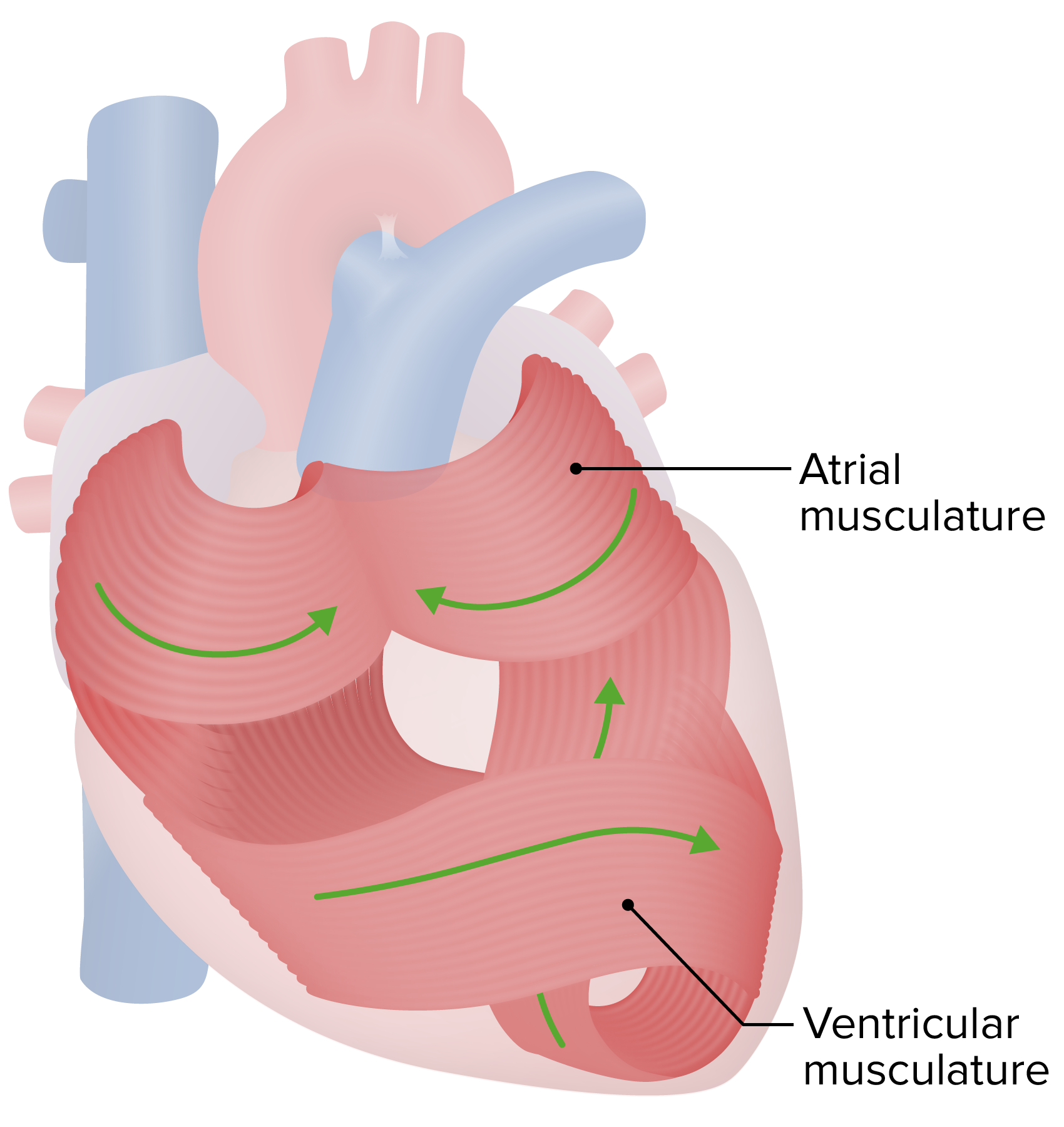Playlist
Show Playlist
Hide Playlist
Membrane Potential – Heart Rate and Electricity
-
Slides Heart Rate and Electricity.pdf
-
Download Lecture Overview
00:02 To start off talking about action potentials, we need to set up some basic parameters. 00:08 The basic parameters just so happens to be what's inside a cell versus what’s outside the cell. 00:15 So, we have three ions that we’re going to concern ourselves with. 00:18 Why only three? Because they're the most important. 00:22 We have potassium. 00:23 We have sodium. 00:24 And we have calcium. 00:26 The big thing to remember is that potassium is high within the myocyte, and these are cardiac myocytes, and it’s low outside. 00:35 Sodium and calcium are the opposite. 00:37 They are high in the interstitial fluid, but low within the cardiac myocyte. 00:43 Why or how can we utilize these ionic differences? It is the ion differences that will change the conductance across the cell membrane, which generates that action potential. 00:57 So, simply by having two ions in different concentrations. 01:01 That concentration gradient can be used to spark electricity or voltage changes to happen. 01:09 One of the other things, besides conductance, which we almost always label as G – so, whenever you see a G, know we’re talking about conductance across the membrane. 01:19 What helps set up these concentration differences are pumps. 01:24 These electrogenic pumps, such as the sodium potassium ATPase, which pumps out three, pumps in two sodium and potassium molecules. 01:38 With this allows us to do, though, is create a difference in the potential because we've exchanged different amounts of positive charges – three versus two. 01:49 So, you always set up a little bit of a difference between the two across the membrane because of this 3 to 2 relationship. 02:01 The other thing to think about when you're talking about a membrane potential change is it matters how fast that conductance happens. 02:11 Does the conductance change occur very quickly, like we saw in the non-pacemaker action potential, or does it occur slower as what would happen if you're in a pacemaker action potential? Those are the key things to keep in mind. 02:30 So, now, let's talk through the key ions – potassium, sodium and calcium. 02:37 Why are they changing at different times and how does this work with the various channels? So, let's start with our resting potential. 02:46 During rest, the potassium channels are open, which allows potassium to move from inside the cell to outside the cell. 02:55 Now, now, now, why does it want to do that? Because of the concentration difference. 03:01 It’s high on the inside and low on the outside. 03:04 So, more of the potassiums within the cell want to move out into the interstitial space simply because of that concentration difference. 03:14 Now, both sodium and calcium, they want to get in. 03:17 Why? Because they’re high outside, they’re low inside, they want to travel into the cell, but unfortunately, the gates are closed. 03:26 So, the only thing that's operated in this condition is that potassium is leaving the cell, sodium and calcium are prevented from entering the cell. 03:38 This yields a hyperpolarized state. 03:41 What do we mean by hyperpolarized? It means that the resting membrane potential is going to be lower than normal. 03:50 Lower than normal. 03:52 Why? About 90 mV. 03:56 This happens to be about what the potassium equilibrium potential is for having the amount of sodium within the cell versus out of the cell. 04:07 It can simply be calculated. 04:09 So, resting membrane potential of -90 mV is very common for ventricular myocyte. 04:15 Now, so that's what happens at rest. 04:18 So, even though, you're at rest, your ions are still moving. 04:21 They're not really stationary. 04:23 But how about when you get an active process, such as an action potential, to occur? In the action potential environment, we close the potassium channels. 04:35 We open up the sodium and the calcium channels. 04:39 So, sodium and potassium – sodium and calcium want to rush in the cell. 04:44 Why do they want to rush in? Remember, they’re at high concentration outside the cell, low concentration inside the cell. 04:51 So, they simply want to travel down that gradient. 04:54 Potassium is prevented from leaving. 04:58 So what this does is depolarize the cell. 05:02 So, why is it depolarized? Depolarization means that membrane potential increases. 05:09 Why would the membrane potential increase? Because a positive molecule, like sodium, traveled in, so it became more positive. 05:17 Calcium traveled in, became more positive. 05:20 You’ve prevented the sodium from – sorry, the potassium from leaving, which means more positives build up. 05:26 So, you have three good reasons why the membrane potential will increase. 05:31 And this is a depolarization. 05:33 So, you might go up to maybe a positive 10 mV, so that it contrasts resting potentials and action potentials. 05:42 Why do they occur? Concentration gradient differences between the ions and then which channels are open and which channels are closed.
About the Lecture
The lecture Membrane Potential – Heart Rate and Electricity by Thad Wilson, PhD is from the course Cardiac Physiology.
Included Quiz Questions
In resting conditions, which of the following channels is most likely open in a cardiac myocyte?
- Potassium channels
- Sodium channels
- Calcium channels
- Chloride channels
What is the usual resting membrane potential for ventricular myocytes?
- -90 mV
- -75 mV
- 90 mV
- 75 mV
- -60 mV
Customer reviews
5,0 of 5 stars
| 5 Stars |
|
5 |
| 4 Stars |
|
0 |
| 3 Stars |
|
0 |
| 2 Stars |
|
0 |
| 1 Star |
|
0 |




